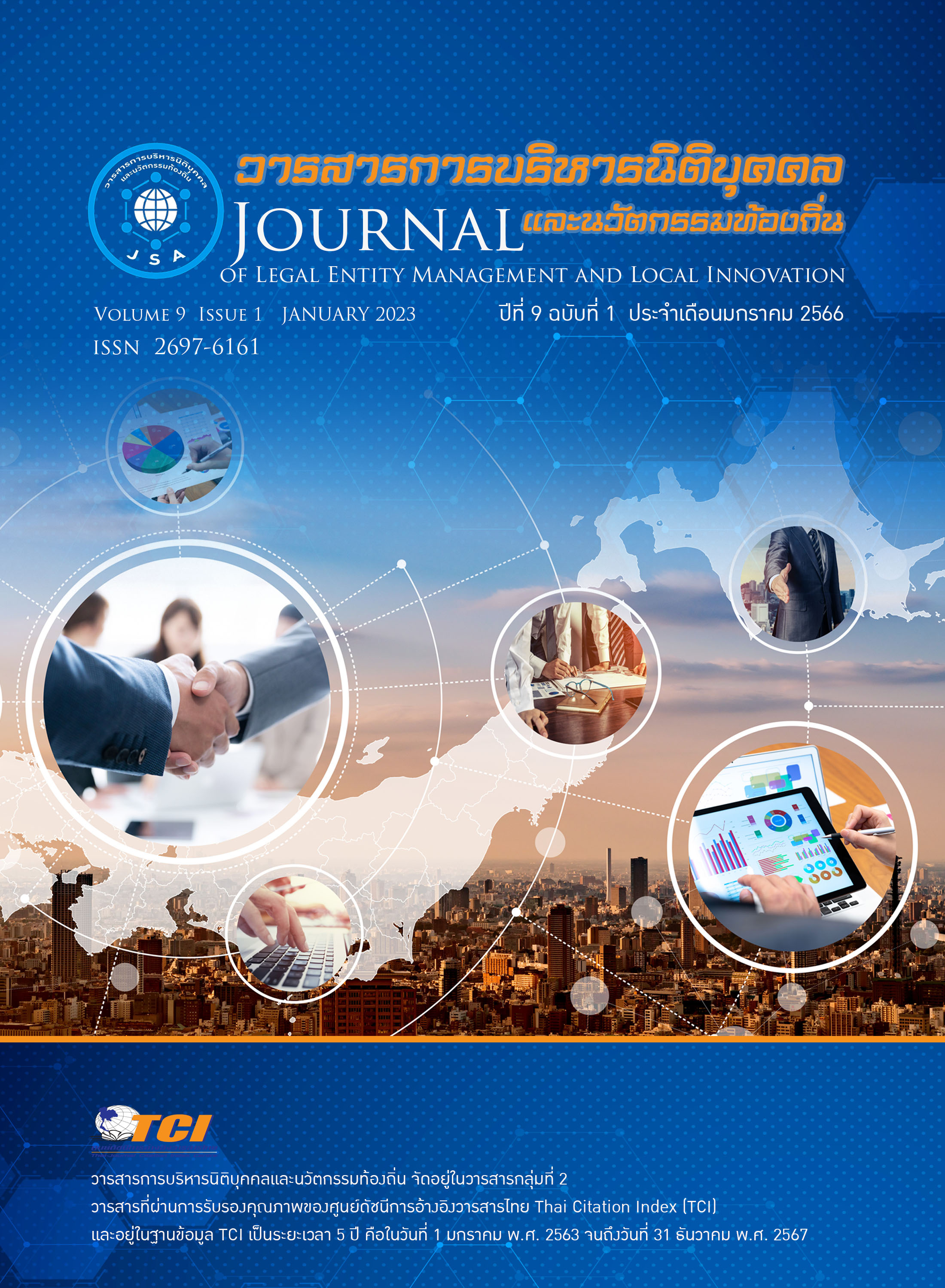The Use of School Administrators’ Power to Job Motivation of Teachers in Schools Under Loei Primary Educational Service Area Office 2
Keywords:
Use of Executive Power, Motivation for PerformanceAbstract
The objectives of this research were 1) to study the use of the power of school administrators 2) to study teachers' motivation for work, 3) to study the relationship between the use of the power of school administrators and teachers' motivation to work, and 4) to study the use of school administrators’ power to job motivation of teachers in schools under Loei Primary Educational Service Area Office 2. The samples were 297 persons from the teachers in The Schools Under Loei Primary Educational Service Area Office 2 from 6 districts. The instruments used for this research were questionnaires on the use of power by school administrators. Questionnaires on teachers' performance motivation were 5 rating scales, with a classification value of the whole item between 0.27-0.97 an index of conformity (IOC) between 0.60 – 1.00, and a confidence value of the whole questionnaire of 0.96. The analyses were percentage, mean, SD standard deviation, and stepwise multiple regression analysis. The results of the findings were as follows: 1. Using the power of the school administrators Overall, it was at a high level (=4.28), in descending order as follows: information power (=4.64), reward power (=4.56), coercive power (=4.28), legitimate power (=4.23), referent power (=4.20), expert power (=4.07), and connection power (= 4.06). 2. Teacher's performance motivation Overall (=4.29), it was at a high level, in descending order as follows: growing needs (=4.54) relationship needs (=4.25), and living needs (=4.10).3. The relationship between the use of the power of the school administrators and the motivation of teachers in schools under Loei Primary Educational Service Area Office 2 had a significant positive correlation at a high level. The statistic at the .01 level (r = .95) was based on the hypothesis. 4. The stepwise multiple regression analysis revealed that there were 6 independent variables: reward power (X4), expert power(X2), coercive power(X1), information power (X6), legitimate power (X3), and referent power(X5) together explained. The use of the power of the school administrators affects the motivation of teachers in schools under the Office of Elementary Education Service Area 2, overall 94%, were able to create a forecast equation in the form of a score. The raw and forecast equations in standard score format are as follows. Ŷ = -0.161 + .327(X4) + .474(X2) +.203(X1) +.080(X6) -.222(X3) +.175(X5) The standard score forecast equation is Ẑ = .381Z(X4) +.422Z(X2) +.203Z(X1) +.108Z(X6) -.222Z(X3) +.167Z(X5).


